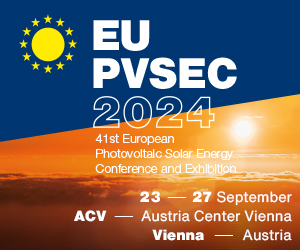Europe installs record levels of offshore wind energy
- 6 years ago (2018-02-14)
- David Flin
WindEurope has released a report that says that Europe installed a record amount of offshore wind energy in 2017. The UK and Germany were the largest installers.

European Photovoltaic Solar Energy Conference and Exhibition (EU PVSEC) 2024
According to WindEurope, countries installed 3.1 GW of offshore wind power in 2017, with the vast majority coming from UK and Germany, but France, Finland, and Belgium also connected wind farms to the grid.
The industry body said that falling costs means that investing in offshore wind is now a more attractive proposition.
Among the UK’s new additions was Hywind Scotland, the world’s first floating wind farm, situated off the coast near Aberdeen. Its turbines, tethered to the seabed, can be moved to deeper waters than conventional offshore wind farms, allowing them to be moved to more productive locations.
WindEurope said that despite the increase in new capacity, investments in offshore wind dropped to €7.5 in 2017. In 2015, investments into 2.5 GW of capacity cost over €13 billion. Falling costs is said to be one of the reasons for the tumble.
Giles Dickson, CEO of WindEurope, said: “Offshore wind is now a mainstream part of the power system, and the costs have fallen rapidly. Investing in offshore wind today costs no more than conventional power generation. It just shows that Europe is ready to embrace a much higher target for renewables for 2030. 35 per cent is easily achievable, especially now that floating offshore wind farms are also coming on line. We will see further growth in 2018 and 2019, but the longer term outlook for offshore wind is unclear. Very few countries have defined yet what new volumes they want to install up to 2030.
“The message to governments as they prepare their plans is: “Go for it on offshore wind.” It’s perfectly affordable and getting cheaper. It’s a stable form of power with increasing capacity factors, and it’s ‘made in Europe’, and supports jobs, industry and exports.”


